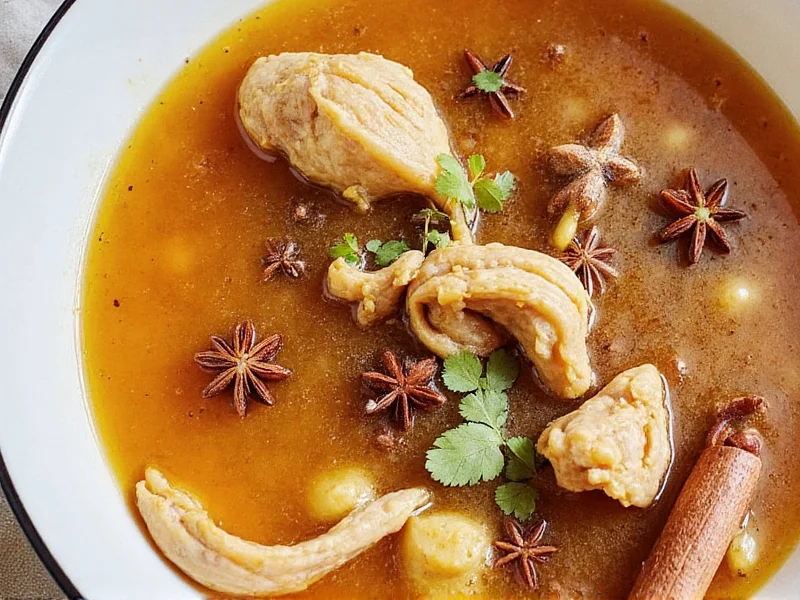Jewish chicken soup, affectionately called 'Jewish penicillin,' has nourished generations with its healing properties and comforting flavor. This culinary tradition spans centuries and continents, evolving as Jewish communities settled across Europe and beyond. While recipes vary by family and region, certain spices remain central to achieving that distinctive, soul-warming taste that defines authentic Jewish chicken soup.
The Essential Spice Trio
Three ingredients form the backbone of traditional Jewish chicken soup seasoning:
- Fresh parsley - Adds brightness and balances the richness of the broth
- Fresh dill - Provides a distinctive herbal note that defines Ashkenazi soup
- Freshly ground black pepper - Essential for depth without overwhelming heat
These ingredients should be added toward the end of cooking to preserve their delicate flavors. Many Jewish grandmothers insist that dried versions simply don't compare to fresh herbs for authentic flavor. The ratio typically follows 3 parts parsley to 1 part dill, with black pepper to taste.
Traditional Supporting Spices
Beyond the essential trio, these spices enhance the broth's complexity while staying true to Ashkenazi tradition:
| Spice | Traditional Use | Recommended Amount (per gallon) |
|---|---|---|
| Celery seed | Earthiness without fresh celery's bitterness | ½ teaspoon |
| Garlic | Subtle background note (never overpowering) | 2-3 cloves, crushed |
| Onion powder | Consistent flavor without texture of cooked onions | 1 teaspoon |
| Whole black peppercorns | Milder, rounded pepper flavor | 8-10 peppercorns |
Celery seed appears in nearly all traditional recipes, providing the celery flavor without the vegetable's tendency to become bitter during long simmering. Garlic should be used sparingly—Jewish chicken soup is not meant to be garlicky. Many cooks prefer adding garlic cloves early in the cooking process and removing them before serving.
Regional Variations in Spice Profiles
Jewish communities developed distinct spice preferences based on their geographic locations:
- Ashkenazi (Eastern European) - Minimalist approach focusing on parsley, dill, and pepper. Some families add a single bay leaf.
- Polish tradition - Often includes a pinch of marjoram for subtle floral notes
- Russian variation - May incorporate a small amount of allspice for warmth
- Mizrahi (Middle Eastern) - Features more complex spice blends including turmeric, cumin, and cilantro
When preparing authentic Ashkenazi Jewish chicken soup, restraint with spices is crucial. The goal is a clean, golden broth that showcases the quality of the chicken and vegetables, not a heavily spiced soup. Many Jewish cooks believe that if you can identify individual spices distinctly, you've added too much.
When to Add Spices for Optimal Flavor
Timing significantly impacts how spices affect your Jewish chicken soup:
- Early addition - Whole spices like peppercorns, bay leaves, and celery seed should go in during the initial simmer to infuse the broth
- Middle addition - Dried herbs (if using) added when vegetables are halfway cooked
- Final 10 minutes - Fresh parsley and dill added just before serving to preserve their bright flavor
Overcooking fresh herbs results in a muddy, bitter flavor that ruins the delicate balance of traditional Jewish chicken soup. The classic approach involves simmering the soup for 2-3 hours with basic aromatics, then removing the chicken and vegetables, straining the broth, and adding fresh herbs just before serving with matzo balls.
Common Spice Mistakes to Avoid
Even experienced cooks make these errors when preparing Jewish chicken soup:
- Using dried dill instead of fresh (dill loses its distinctive flavor when dried)
- Adding too much garlic (traditional recipes use garlic sparingly, if at all)
- Using pre-ground pepper instead of freshly cracked (loses aromatic compounds)
- Adding fresh herbs too early in cooking
- Using spice blends like 'poultry seasoning' (too many competing flavors)
- Adding salt only at the end (salt needs time to integrate with the broth)
For the most authentic Ashkenazi chicken soup experience, resist the urge to experiment with exotic spices. The beauty of this dish lies in its simplicity and purity of flavor. As many Jewish grandmothers say, 'If you need to cover up the taste with spices, you're not making it right.'
Modern Adaptations While Maintaining Tradition
Some contemporary cooks enhance traditional Jewish chicken soup with subtle additions that respect the dish's heritage:
- A single strip of lemon zest added during the last 30 minutes of cooking
- A pinch of saffron for color and delicate floral notes (common in some European traditions)
- A small piece of kombu seaweed for umami depth (a modern technique)
- Fresh thyme added with the parsley at the end
These additions should be used with restraint—never overwhelming the essential parsley-dill-pepper foundation. The best Jewish chicken soup remains recognizable to generations of Jewish families while reflecting the cook's personal touch.
Perfecting Your Spice Balance
Mastering Jewish chicken soup seasoning requires attention to detail:
- Start with high-quality, fresh spices (replace dried spices every 6 months)
- Taste and adjust seasoning after the soup has cooled slightly (heat numbs taste buds)
- Remember that flavors continue to develop as the soup chills overnight
- When in doubt, under-season—you can always add more but can't remove excess
- Consider your audience (children often prefer milder seasoning)
The most authentic Jewish chicken soup recipes have been passed down through generations with minimal written instructions. Much of the 'secret' lies in knowing when to stop adding spices. As one Brooklyn-born chef explains, 'My bubbe [grandmother] would say the soup should taste like chicken, not like the spice cabinet.'











 浙公网安备
33010002000092号
浙公网安备
33010002000092号 浙B2-20120091-4
浙B2-20120091-4